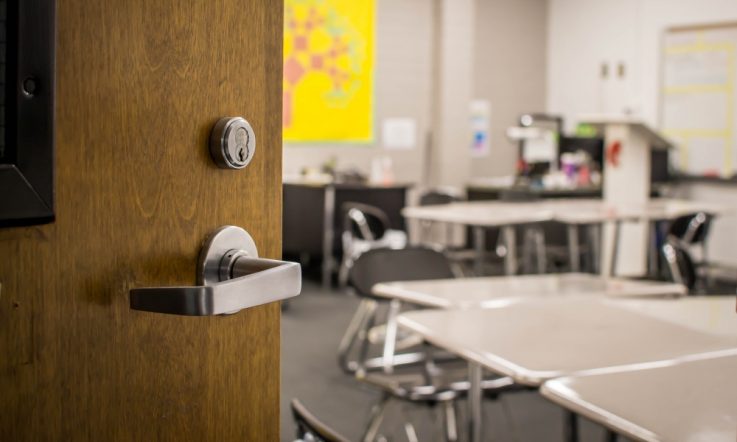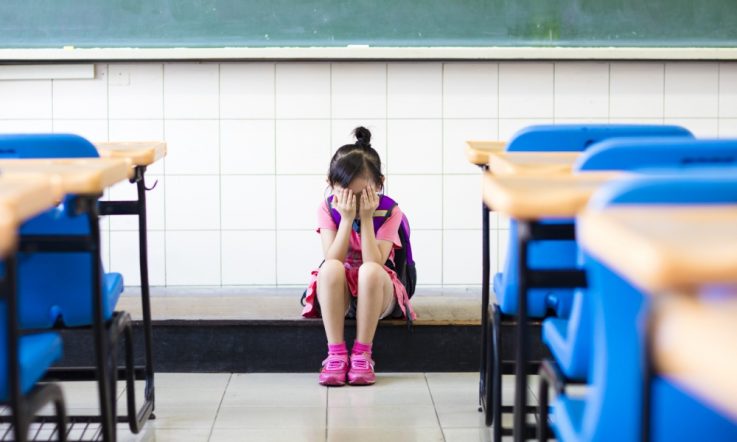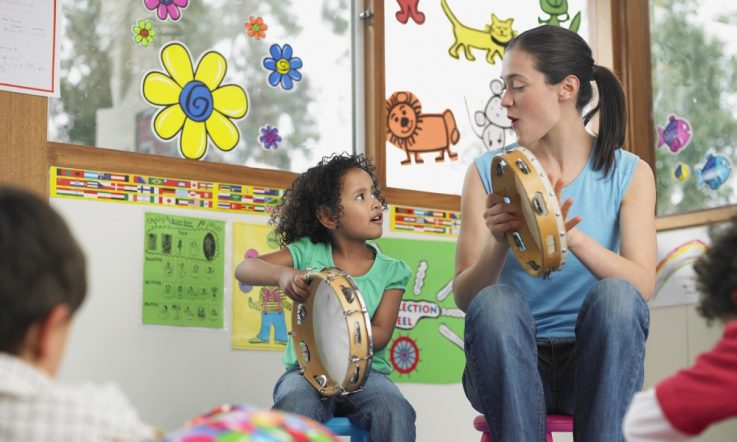Since the seminal Adverse Childhood Experiences study in the US – in which the term ACEs was first introduced – it has been widely understood that stress and trauma affects schooling and educational outcomes (Felitti et al., 1998).
Research shows that experiences of trauma can significantly disrupt the developing body and brain of a child and have lasting impacts into adulthood. In particular, childhood trauma negatively impacts one’s ability to learn and engage with schooling in a productive and positive manner. Given the large amount of time that children spend at school, teachers and educators have been identified as important stakeholders when helping children to recover from trauma (Miller & Berger, 2020).
Schools are increasingly being asked to support the mental health and wellbeing of our children and this has created an opportunity to reframe the teaching the learning environment, creating a whole-school approach to culture change. The MacKillop Institute’s Reframing Learning and Teaching (ReLATE) model, recognises that teachers and schools need tools, knowledge, skills and resources that enable them to be cognisant of the impacts of adverse childhood experiences on engagement, learning, health and wellbeing.
Combining educational research, social science, behavioural theory and neuroscience, teachers are supported to implement practical strategies in their classrooms. It is understood that there has been a considerable rise in the application of positive psychology strategies in professional contexts to improve wellbeing (Turner & Thielking, 2019). Leading researcher in positive psychology, Martin Seligman (2012), states that wellbeing can be defined as a construct which includes the elements of positive emotion, engagement, positive relationships, meaning and accomplishment. Safe, predictable, and supportive learning environments must be created and maintained in classrooms where staff and students are not just known, but are deeply understood.
Three elements to support teachers and schools
Three elements – safety, relational trust, and shared language – can directly support teachers and schools in their endeavours to improve teaching, learning and wellbeing.
Safety
Safety is central to survival. All of the brain’s complex systems and activities work together with one overarching purpose – survival (Goldstein, 1995). However, safety cannot be achieved by individuals. Individuals need the support of family, community and culture to feel safe and thrive.
In a school environment, safety can be established through activities such as:
- Exploring and adapting the physical space where students will work most of the time – for example, thinking about your classroom layout and how a student enters a room. Is the room full of too much clutter or is there a safe space for a child to go to within the regular classroom for them to self-regulate without there being exclusion from their peer group?
- Providing clear information about the day ahead.
- Establishing a check-in strategy to learn how the child or young person is feeling and if they are ready for learning or more time.
- Actively listening with an open mind, free of judgement or personal bias.
- Modelling safe, predictable and consistent expectations.
Relational trust
As a social resource for school improvement, relational trust facilitates the development of beliefs, values, organisational routines and individual behaviours that instrumentally affect student’s engagement and learning (Bryk & Schneider, 2002). Relational trust is a prerequisite for teachers to engage in challenging conversations, feel free to open up and acknowledge what they don’t know, and use knowledge and expertise to support others in the school community.
In schools, relational trust can be established through activities such as:
- Considering acts of kindness that contribute to the happiness of students or colleagues.
- Following up on commitments or promises made.
- Actively contributing to conversations with others.
- Smiling and using colleagues’ or students’ names when you greet them.
- Being kind to yourself, remembering it takes time to build relational trust.
Shared language
Shared language in schools is about more than just speaking the same words. It is seeking to connect deeply to self and others. It is about people developing an understanding amongst themselves based on language to help them communicate more effectively (Thomas & McDonagh, 2013).
In being attuned to those around us, educators can create a school culture that is focused on sustainable practice for all to benefit. In schools, shared language has the potential to shift attitudes and behaviours that contribute to creating a healthier environment, unifying an approach to better outcomes for staff and students.
In your school, shared language can be established through activities such as:
- Spending time getting to know your colleagues’ and students’ interests that are not work or school related.
- Being active and present in meetings. It is important to show you are actively listening through body language such as moments of eye contact or asking clarifying questions, engaging in a two way conversation.
- Learning from failed attempts and seeing them as opportunities to grow.
- Being mindful that everyone (colleagues, students and their parents and carers) comes with their own understandings and clear communication between individuals is key to connection.
- Spending time learning the cultural narrative of those that make up the school community.
The ReLATE Circle
A whole-school strategy that schools might like to consider is MacKillop’s ReLATE Circle. It has various objectives – including safety, emotional literacy, social responsibly and a sense of collective purpose. Physically forming a circle for this exercise equalises the dynamic and establishes a norm of democracy in the group. It enables people to speak to everybody else equally, rather than just directing their comments or questions to the facilitator. This begins to establish the notion of relational trust, equality, attunement and shared enjoyment; in which to be courageous is to be vulnerable.
There are four questions that make up the ReLATE Circle that teachers can use with their students and their colleagues:
- How are you feeling about school or work today?
- What is one thing you want to achieve today?
- If you need support, who will you ask?
- Why is what you want to achieve important to you?
Schools wanting to understand the ReLATE model are invited to attend a free online information session, or contact the MacKillop Institute directly. Dates for upcoming sessions can be found at The MacKillop Institute website.
References
Bryk, A., & Schneider, B. (2002). Trust in schools: A core resource for improvement. Russell Sage Foundation.
Felitti, V. J., Anda, R. F., Nordenberg, D., Williamson, D. F., Spitz, A. M., Edwards, V., & Marks, J. S. (1998). Relationship of childhood abuse and household dysfunction to many of the leading causes of death in adults: The Adverse Childhood Experiences (ACE) Study. American journal of preventive medicine, 14(4), 245-258. https://doi.org/10.1016/S0749-3797(98)00017-8
Goldstein, D. S. (1995). Stress, catecholamines, and cardiovascular disease. Oxford University Press.
Miller, J., & Berger, E. (2020). A review of school trauma-informed practice for Aboriginal and Torres Strait Islander children and youth. The Educational and Developmental Psychologist, 37(1), 39-46. https://doi.org/10.1017/edp.2020.2
Seligman, M. E. P. (2012). Flourish: A visionary new understanding of happiness and well-being. Free Press
Thomas, J., & McDonagh, D. (2013). Shared language: Towards more effective communication. The Australasian medical journal, 6(1), 46. 10.4066/AMJ.2013.1596
Turner, K., & Theilking, M. (2019). Teacher wellbeing: Its effects on teaching practice and student learning. Issues in Educational Research, 29(3), 938-960. https://search.informit.org/doi/10.3316/ielapa.641930197632835
Ben Sacco talks about three elements that can support schools in improving teaching, learning and wellbeing. With a colleague or group of colleagues, choose one of the three elements.
Looking at the list of suggested activities, where are your strengths, individually and as a team? Which are areas for development? From the areas for development, choose one activity to focus on over the next week, then meet with colleagues again to discuss your experiences and progress.



